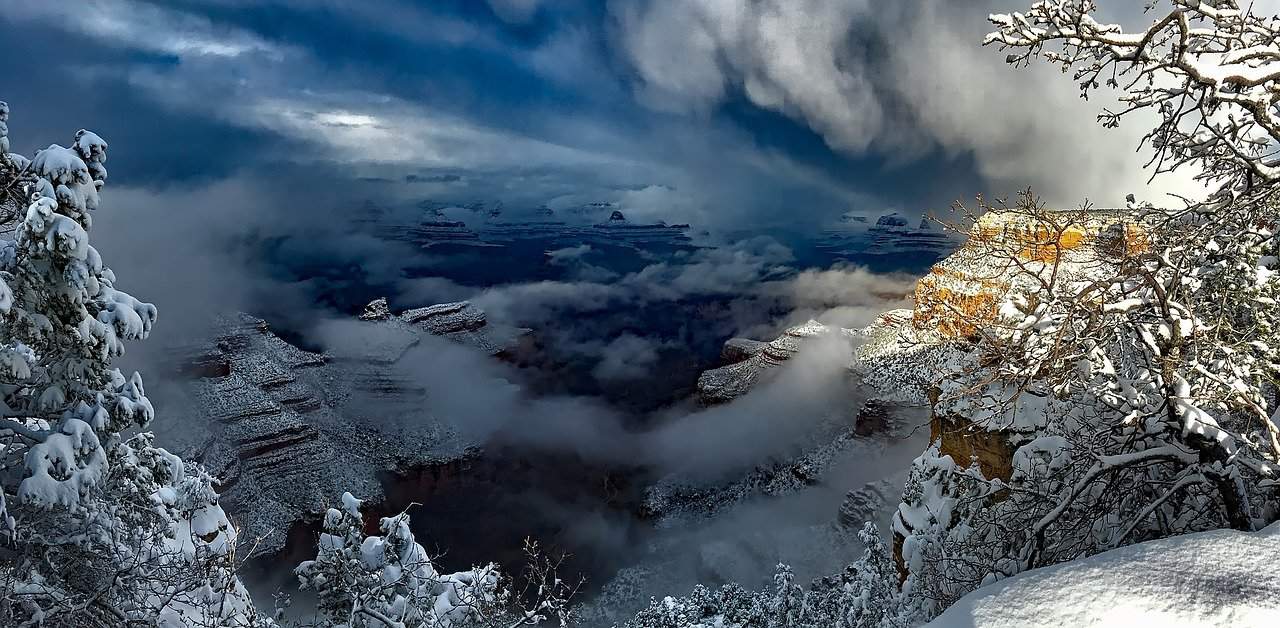
As a year-round destination, the South Rim of the Grand Canyon attracts visitors from across North America and beyond. From warm summer days to the blazing fall color to a snow-kissed desert landscape, the Grand Canyon is a National Park standout year-round. With snow settling rock layers and pinyon pine branches, the canyon transforms into a winter wonderland. Winter visitors also enjoy a quieter canyon experience since fewer people visit during the winter, though Arizona offers lots of bluebird days. Read on for reasons to visit the Grand Canyon in Winter.
7 Reasons to Visit the Grand Canyon in Winter
Fewer Visitors
Sunny Days
Reservations Easier to Secure
Chance to See Snow
Most Places are Open
Easy Stop for Roadtrippers in Northern Arizona
See Some Wildlife
Do Wintertime Star Gazing
Grand Canyon National Park at a Glance
| Year Established: 1919 |
| Located: Northern Arizona |
| Size: over 1.2 million acres |
| Top Features: Mather Point, Bright Angel Trail and the Historic Grand Canyon Village |
A Winter Visit to Grand Canyon
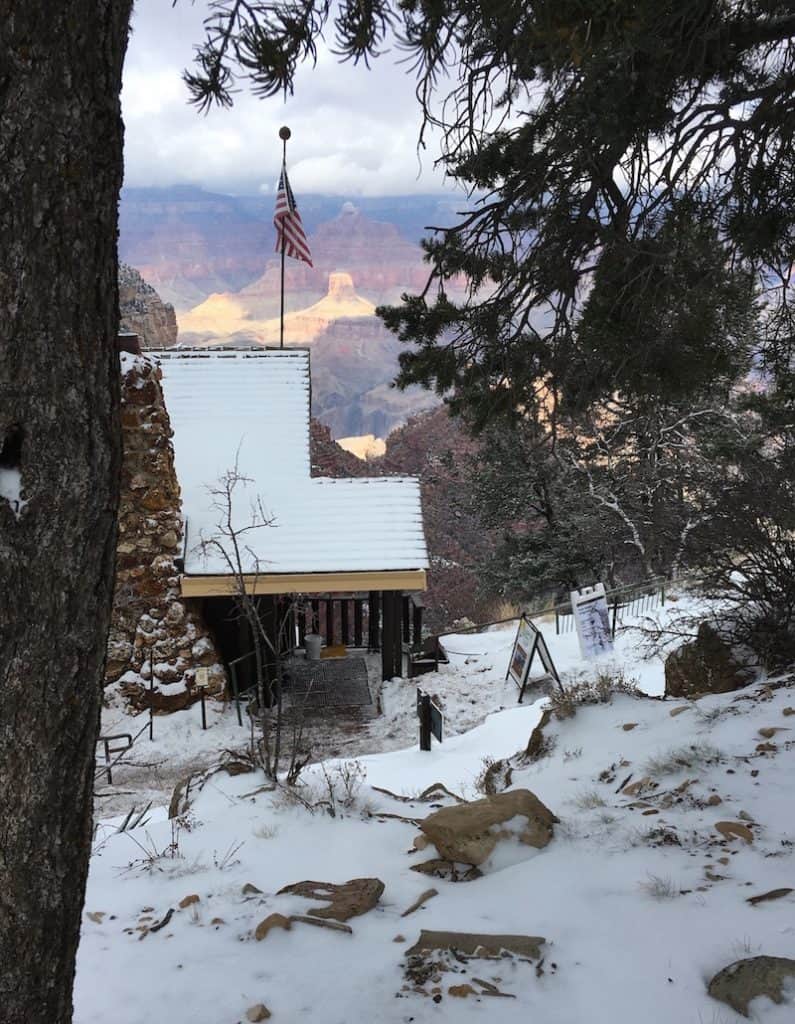
With its easy access from Interstate 40, the south rim of the Grand Canyon offers an ideal stop during a winter road trip. The summer crowds disappear, and the canyon offers quiet hikes during the winter. This is one reason to visit the Grand Canyon in Winter.
Getaway Guide for the Grand Canyon’s South Rim
Top Things to do at the Grand Canyon South Rim
-
- Walk along the Rim Trail for views of the Grand Canyon.
- See the Sunrise or Sunset at Mather Point or Yaki Point.
- Tour the Historic Grand Canyon Village, like the El Tovar Hotel along with Bright Angel Lodge.
- Shop for crafts at the Hopi House.
- Walk through Kolb Studio.
- Look over the Grand Canyon edge at the Lookout Studio.
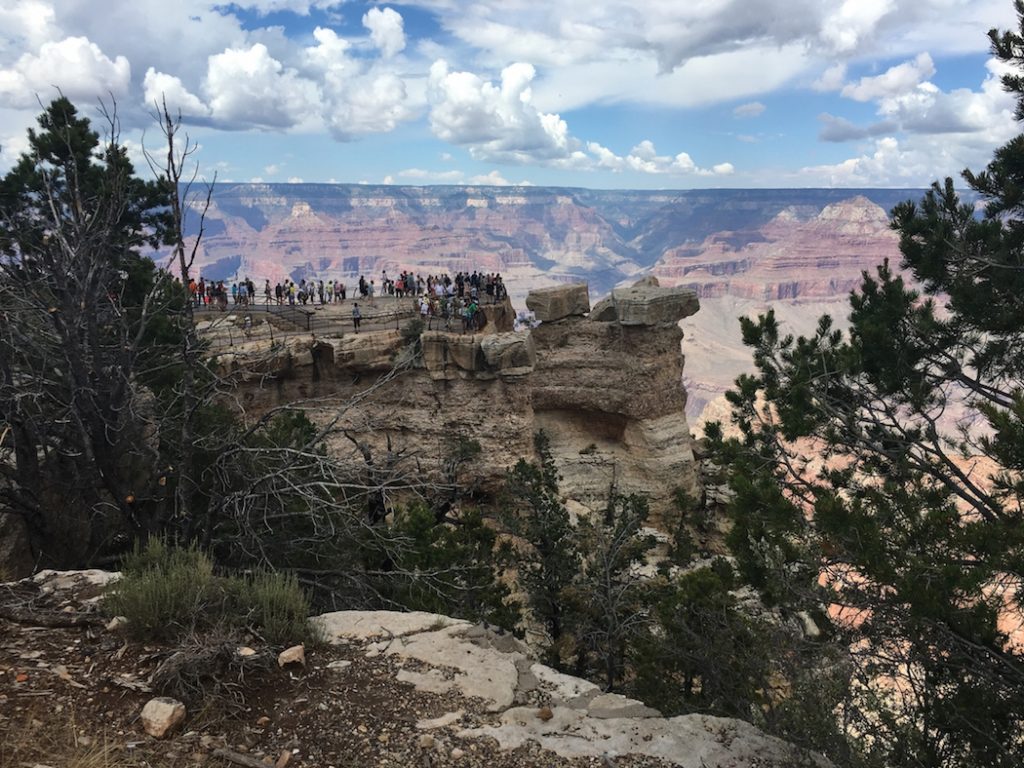
Top Places to Visit at the Grand Canyon South Rim
Most of the facilities at the Grand Canyon National Park are open during the winter. This is one reason to visit the Grand Canyon in Winter.
Grand Canyon Visitor Center
This is the most common first stop at the Grand Canyon. It offers information and maps along with interpretive areas and the introductory film.
Located next to the main parking area. Open daily from 10 a.m. – 4 p.m.
Grand Canyon Conservancy’s Park Store
Your source for books and gifts during your visit to the Grand Canyon.
Located across from the Grand Canyon Visitor Center. Open daily from 8 a.m. to 6 p.m.
Yavapai Geology Museum
Built in 1928, learn about the geology of the canyon and how it was formed. Also look out of the large windows, and it’s especially popular at sunset.
Located along the rim between the visitor center and Grand Canyon Village. Open from 8 a.m. to 6 p.m.
Verkamp Visitor Center
Built in 1906 by the Verkamp family, it was a kurio shop for decades. Now it’s a smaller visitor center located in the historic village.
Located in the Grand Canyon Village. Open daily from 8 a.m. to 6 p.m.
Kolb Studio
Built in 1905, this was a studio for the Kolb brothers, local photographers. Located along the South Rim.
Located in the Grand Canyon Village. Open daily 8 a.m. 6 p.m.
Hopi House
Built in 1905, it’s a gift shop dedicated to traditional arts and crafts.
Located in the Grand Canyon Village. Open daily from 9 a.m. to 5 p.m.
Lookout Studio
Positioned along the rim, it was built in 1914. It sells rocks and fossils along with souvenirs.
Located in the Grand Canyon Village. Open daily from 9 a.m. to 5 p.m.
Grand Canyon Depot
Walk by the train depot. It’s made of logs and one of three remaining log depots still in existence. Find the Grand Canyon Railroad and the train is in the station most days from noon to 3 p.m.
Located in the Grand Canyon Village.
Shrine of the Ages
This is a multi-purpose building used for ranger programs and religious ceremonies.
Located in the Grand Canyon Village and is a separate stop on the Blue Village shuttle bus.
Petrified Forest National Park Guide
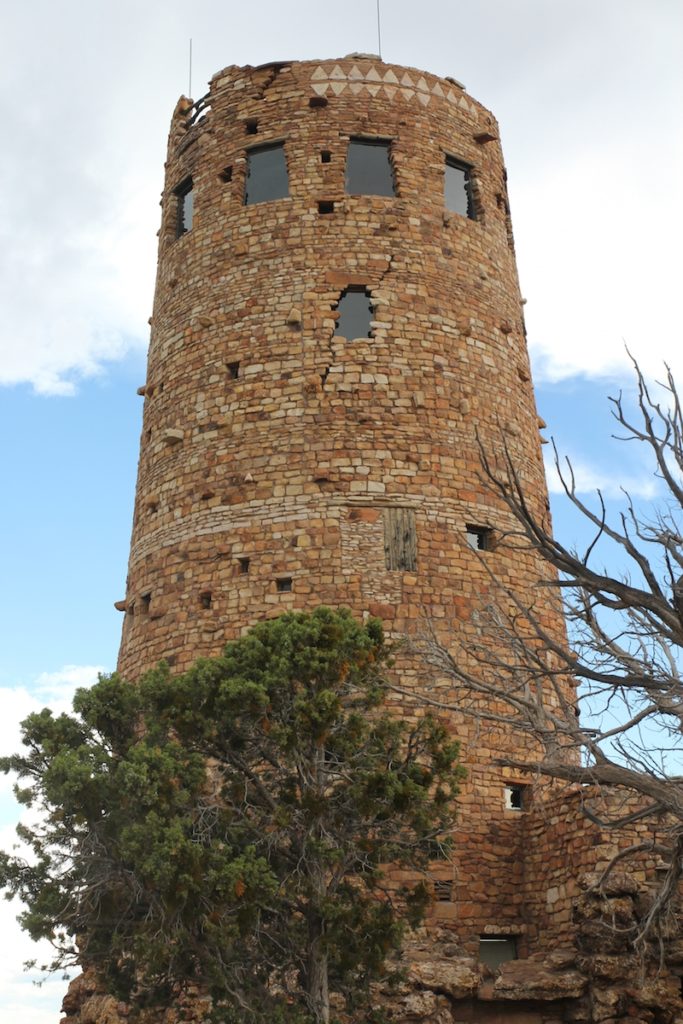
Desert View and Desert View Tower
Take a scenic drive 25 miles (41 km) east of the Grand Canyon Village. Along the route, you will pass Pipe Creek Vista, South Kaibab Trailhead, Yaki Point, Grandview Point, Moran Point, Lipan Point, Navajo Point and Desert View.
The South Kaibab Trailhead is an endpoint for the Rim Trail/Greenway Trail that runs along the rim. This is also the way to the East Entrance of Grand Canyon South Rim. Popular with drivers staying in Flagstaff.
In the Desert View area, find Mary Colter’s Desert View Watchtower built in 1932. Designed after traditional southwest architecture, the tower is 70 feet (21m) tall and offers 360-degree views from the top. Inside, cultural, arts and crafts demonstrations are held,
Visitors can climb the Desert View Tower. There is a 25-person limit, though the views from the windows and the top are stunning. This is one reason to visit Grand Canyon in winter.
The Desert View area offers a ranger station, general store and deli, bookstore, restrooms and gas station.
Tusayan Ruins and Museum
The Tusayan Ruins and Museum are also located in this area. Explore the remains of an ancient Puebloan village and find a kiva with interpretive signs. The museum is closed until further notice.
Top Things to do in Flagstaff Arizona
Hermits Rest
Seven miles (11 km) west of the Grand Canyon Village, find another Mary Colter building along with nine viewpoints. Stop at Trailview Overlook, Maricopa Point, Powell Point, Hopi Point, Mojave Point, The Abyss, The Monument Creek Overlook and Pima Point.
Hermits Rest was built in 1914 to resemble a miner’s cabin and part of the structure is buried in the earth. The massive fireplace is made of local stone.
Hermits Rest is the end point of the Rim Trail and Greenway Trail that runs along the rim. The Hermits Trailhead into the canyon is nearby.
From March until the end of November, reach the area with a red Hermits Rest shuttle bus and it’s closed to private vehicles. During the winter, private vehicles can drive along the scenic route. This is one reason to visit the Grand Canyon in winter.
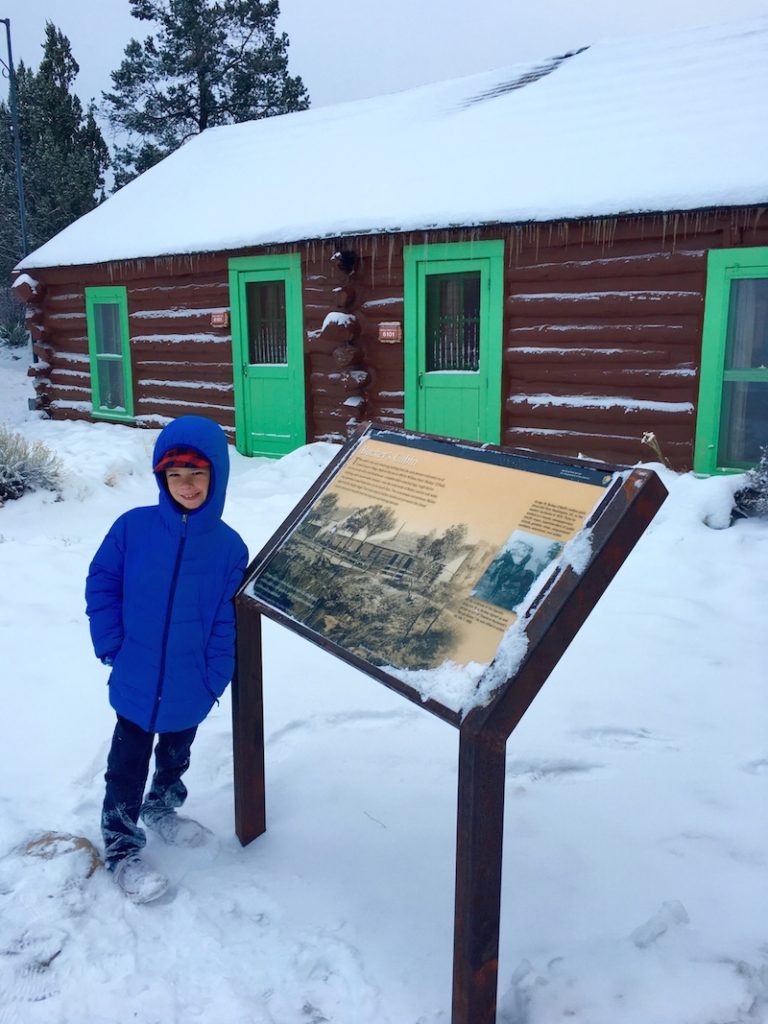
Top Day Hikes on the South Rim
Be prepared for hiking with snacks and water. Expect snow and ice at any time in the winter on trails.
Rim Trail—Easy and level 13-mile (20-km) one-way paved trail with frequent shuttle stops along its route. Runs from Hermits Rest to the South Kaibab Trailhead.
Trail of Time—Part of the Rim Trail, the 2.83-mile (4.56 km) one-way paved trail runs from the Yavapai Geology Museum to the Grand Canyon Village. The interpretive signs explain the passage of time in the Grand Canyon’s rock layers.
Bright Angel Trail—A difficult 18-mile (28 km) round hiking path into the canyon. The water supply is cut off at the 1.5-mile resthouse and the 3.0-mile resthouse for the winter. Snow and ice are common for the first 3 miles.
Tip: Wear appropriate clothes and shoes. Bring layers as well.
Top National Parks in Southern California
Wildlife on the South Rim
Find animals during your trip to the Grand Canyon. This is one reason to visit the Grand Canyon in Winter.
- Mule Deer
- California Condor
- Desert big horn sheep
- Coyote
- Elk
Mule Rides at the Grand Canyon
Note: Mule rides are canceled until April 2024.
Since the late 1800s, mules have climbed in and out of the Grand Canyon carrying cargo and passengers. A mule trip to the bottom of the Grand Canyon is a once-in-a-lifetime adventure for many travelers.
The overnight trip to Phantom Ranch departs from the Bright Angel Corral and switchbacks down the Bright Angel Trail. Riders enjoy a steak dinner at Phantom Ranch and can swim in Bright Angel Creek. Following breakfast, riders climb out of the canyon via South Kaibab Trail.
Mule trips require advance planning, and reservations are rewarded by lottery for a year in advance.
Though with less planning, take a two-hour ride near the canyon rim on a mule. In the winter, the mule trip departs at 10 a.m. with two departures from March through October. Prices start from $152.85 per person, and reservations required.
Riders must be at least 9 years old, four feet, nine inches tall (1.44 m) and weigh less than 225 pounds (102 kg) or 200 pounds (90 kg) for a Phantom Ranch trip. South Rim mule rides are offered year-round, regardless of weather so dress accordingly.
Stargazing at the Grand Canyon
With its dark skies, the Grand Canyon National Park is a certified International Dark Sky Park. According to Park Rangers, the best place to view the night skies is along the rim. For the best time to stargaze, head out about an hour and a half after sunset and before sunrise.
The Grand Canyon Visitor Center, Mather Point and along the Rim Trail are all excellent places to star gaze. This is one reason to visit the Grand Canyon in Winter.
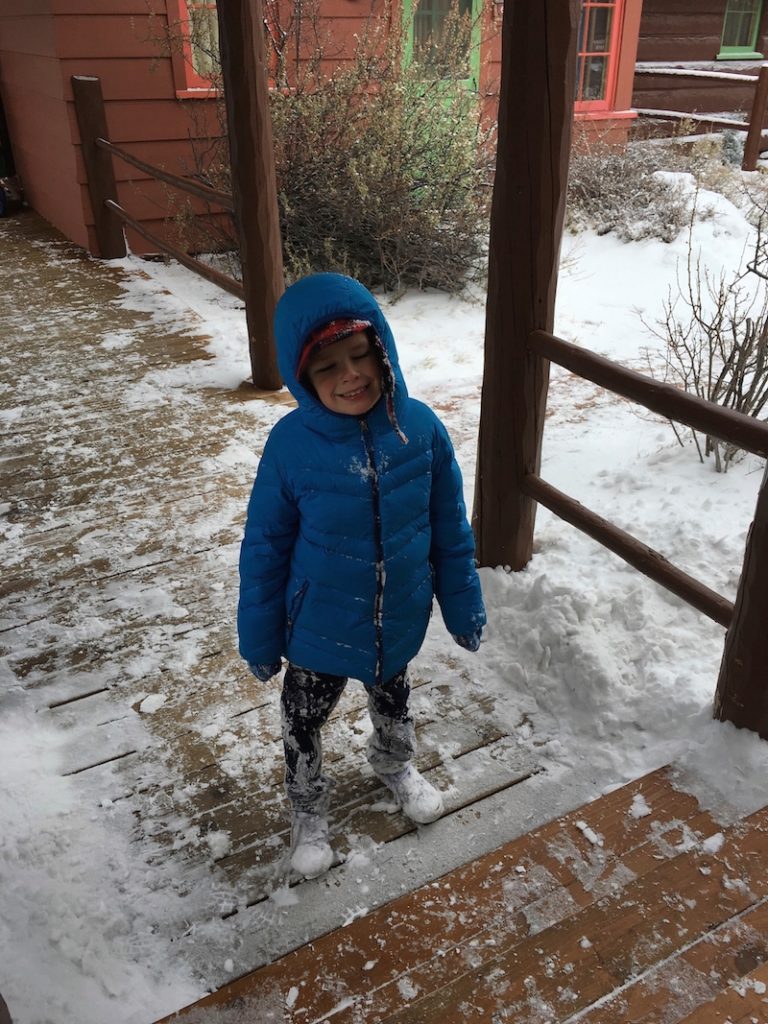
What to do at the Grand Canyon with Kids
The Junior Ranger Program is one of the best ways to learn more about this UNESCO World Heritage Site. It’s free and takes about two hours to complete. My kids love the patches that the Rangers present them after completing their booklet. This is one reason to visit the Grand Canyon in winter.
The Grand Canyon Junior Ranger Program has a booklet specially designed for each age group. To earn the Junior Ranger badge, families need to attend a Ranger Program and find a program list at the visitors center.
For night owls, the Grand Canyon offers the Night Explorer Junior Ranger Patch for kids who attend a special Night Skies Ranger Program and complete the booklet that’s available at any visitor center.
If a trip to the bottom of the canyon is in your itinerary, there’s a special Junior Ranger badge. Phantom Rattler Junior Ranger patch is awarded at Phantom Ranch, a 10-mile journey, one-way.
Junior Ranger Badge Guide
Biking on the South Rim
With frequent snow, biking in the Grand Canyon isn’t advised in winter. The Bright Angel Bicycles is closed for rentals during the winter months.
The History of the Grand Canyon National Park
The first human artifacts found in Grand Canyon National Park date back 12,000 years. The Colorado River started carving the Grand Canyon nearly 2 billion years ago. To date, the canyon measures 18 miles wide, one mile deep and 277 river miles long.
First protected in 1893, the Grand Canyon became a national park in 1919. In 1979 it was designated a UNESCO World Heritage Site.
The canyon is surrounded by the Grand Canyon National Park, Kaibab National Forest, Grand Canyon-Parashant National Monument, Hualapai Indian Reservation, Havasupai Indian Reservation and the Najavo Nation.
People of the Grand Canyon
Since the Grand Canyon crosses half of northern Arizona, many people call it home and have for thousands of years. The Ancestral Puebloans were the first people to live in the area.
The Hualapai People live on the southern side of the Grand Canyon. For 800 years, the Havasupai People have lived on the southern portion of the canyon next to the Hualapai. The Hopi People and the Navajo People live east of the canyon. The Grand Canyon is a sacred place to all.
The Spanish conquistador García Lopez de Cárdenas saw the Grand Canyon in 1540. Mormon missionaries helped establish a ferry across the Colorado River in the area, later named Lees Ferry in the 1850s.
In 1869, John Wesley Powell set out to explore the Colorado River and the Grand Canyon from Wyoming. The Atkinson, Topeka and Santa Fe Railroad arrived at the South Rim in 1901, spurring tourism.
The Fred Harvey Company and Mary Colter
In 1876, Fred Harvey opened restaurants and hotels catering to train passengers in Kansas for the Atkinson, Topeka and Santa Fe Railroad. The Fred Harvey Company became a standard hospitality while traveling on the train in the Southwest.
The Fred Harvey Company and the Santa Fe Railroad built several buildings along the South Rim of the Grand Canyon since it was a major destination for the train. Mary Colter, an architect for Fred Harvey from 1904 to 1949, designed many of the notable buildings, like the Hopi Hose, the Bright Angel Lodge, along with Hermits Rest and Desert Tower.
Using design elements from the desert landscape, Colter wanted her buildings to look each grew from its surroundings. This was a central element of the NPS at the time and known as National Park Rustic.
The CCC
A group of young men arrived at the Grand Canyon in 1933. Part of President Roosevelt’s Works Progress Program, the Civilian Conservation Corps worked on conservation projects across the U.S.
During their tenure, the men of the CCC constructed the stone wall along the edge of the canyon in the Grand Canyon Village National Historic Landmark District. They improved the Bright Angel trail and built resthouses along the route.
The CCC developed camps on the North Rim and Desert View in addition to constructing several trails. The CCC ran the trans-canyon telephone line to connect the north and south sides of the canyon.
For our adventure at the Grand Canyon, I chose the Bright Angel Lodge (1935) located steps from the El Tovar on the south rim. The historic property offers the perfect backdrop for my kids to conjure up a Western adventure.
From the brightly painted, hand-carved doors of the lodge to the log and stone cabins sprinkled along the rim, the kids love rambling through this property. In the Bright Angel History Room, I found the Geologic Fireplace to show the kids the rock layers of the Grand Canyon.
The cabins feature modern bathrooms and furnishings, though a tight fit for most families. Most of the Bright Angel cabins offer one queen bed with room for a pack-n-pack or rollaway. At the Bright Angel Lodge, we enjoyed a hearty breakfast with southwestern egg dishes along with traditional options and a kids’ menu.
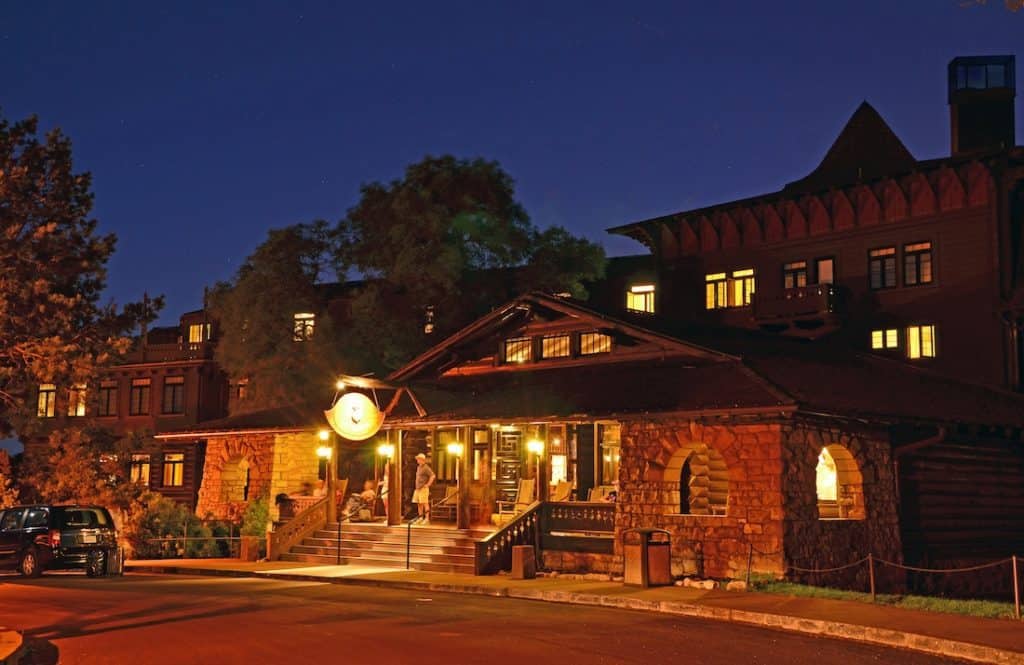
Where to Stay at the South Rim
Grand Canyon National Park South Rim offers lots of lodging options. Reservations might also be easier to secure. This is one reason to visit the Grand Canyon in winter.
El Tovar Hotel
Opened in 1905, El Tovar Hotel was designed by Charles Whittlesey for the Atkinson, Topeka and Santa Fe Railroad. Built of local limestone and Oregon pine, find log walls, limestone arches along with Arts and Crafts furniture. It’s a National Historic Landmark.
As the premier property on the South Rim, it features a dining room along with a lounge and in-room dining. Find standard rooms to suites and reservations required.
Bright Angel Lodge
Opened in 1935, the Bright Angel Lodge was designed by Mary Colter, an architect for Fred Harvey. It features log construction, abode and local limestone. Inside, find the geological fireplace along with the hand-carved and painted doors.
Surrounding the main lodge, find log cabins, some with rim views. It’s near the Bright Angel Trail and part of the Grand Canyon Village National Historic Landmark District. Find historic lodge rooms and semi-detached cabins, reservations required.
Kachina Lodge and Thunderbird Lodge
Both designed in the late 1960s, the Kachina Lodge and Thunderbird Lodge offer rim views and partial rim view along with modern conveniences, like TVs and full baths. A good choice for families wanting a standard hotel room with a convenient location in the historic landmark district.
Find standard rooms with king beds or two queen beds. Reservations required.
Maswik Lodge
Another lodging option with modern rooms.
Yavapai Lodge
Located near the Market Plaza area, this is the largest lodging property on the South Rim. The Yavapai Lodge offers a cafeteria, and some rooms feature air-conditioning.
Find rooms with king beds, two queen beds and accessible and pet-friendly rooms. Reservations required.
Phantom Ranch
Designed by Mary Colter and built in 1922, the lodging at the bottom of the canyon used rock found on site along with Oregon pine. The mule train brought the building materials to the site, and the area is still serviced by a mule train.
It takes about five hours to reach on the mule train or hiking a canyon trail. Lodging and meals are provided, and rooms are awarded on a lottery system 14 months in advance. Meals can be arranged in advance for those camping with a few days notice.
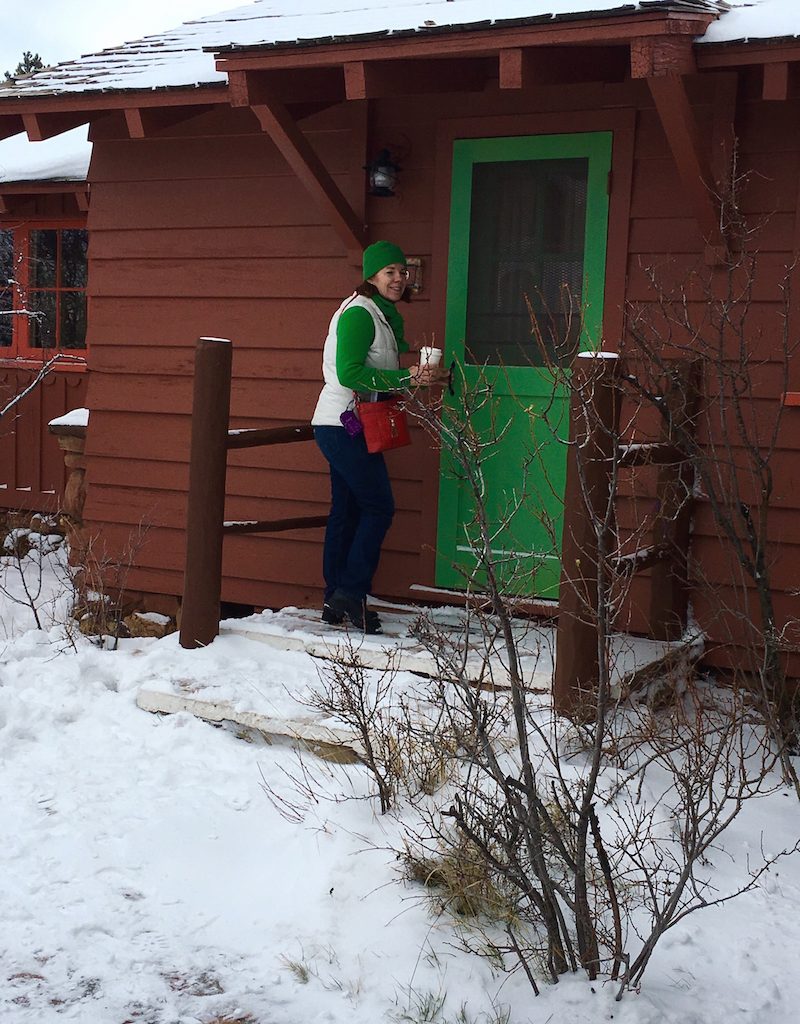
My Stay in a Bright Angel Cabin
For our winter adventure at the Grand Canyon, I chose the Bright Angel cabin for its ambiance. The historic property offers the perfect backdrop for my kids to conjure up a Western adventure.
From the brightly painted, hand-carved doors of the lodge to the log and stone cabins sprinkled along the rim, the kids loved rambling through this property.
The cabins feature modern bathrooms and furnishings, though it’s a tight fit for most families. Most of the Bright Angel cabins include only one queen bed with room for a pack-n-pack or rollaway, though it’s a tight fit.
The following morning, we ate at the Bright Angel Lodge. We enjoyed a hearty breakfast with southwestern egg dishes along with traditional options and a kids’ menu.
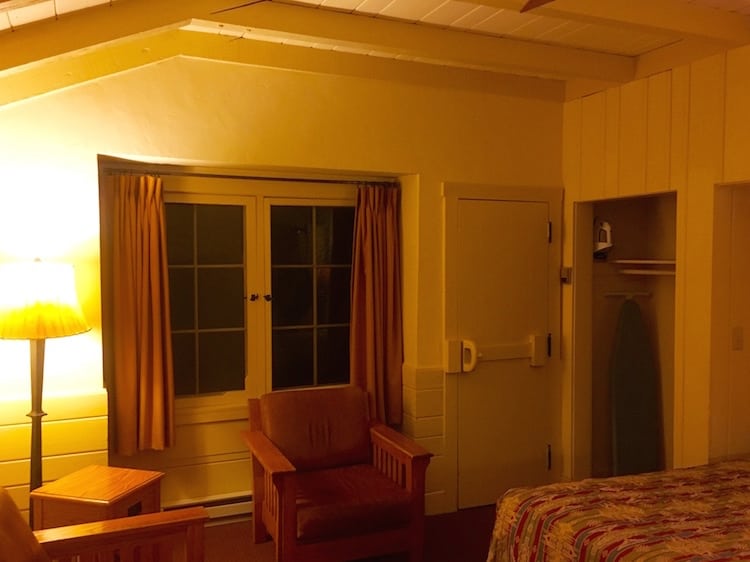
Top National Park Lodges
Winter Camping at Grand Canyon’s South Rim
Mather Campground (no hookups)
- Year-round
- Reservations recommended
- 327 sites
- Potable water and flush toilets
- Showers and coin laundry located nearby.
- Dump station nearby.
Trailer Village RV Park
- Year-round
- Reservations recommended
- Pull through sites with full hook-ups, a vehicle limit of 50 feet
- Potable water and flush toilets
- Showers and coin laundry located nearby.
- Dump station nearby.
Gateway Towns to the South Rim
The South Rim of the Grand Canyon offers the most year-round services and attractions.
Tusayan—Located right outside the south entrance to the Grand Canyon National Park. This town is one mile long, though offers the most convenient lodging and dining outside of the Grand Canyon Village. Also, Tusayan is a base for many commercial tours and flightseeing operations.
Williams—Located along Interstate 40, Williams is a larger community than Tusayan, and it’s 53 miles south of the Grand Canyon South Rim Entrance. Additionally, it’s the departure point for the Grand Canyon Railways.
Flagstaff—Located southeast of Grand Canyon National Park, this mountain destination offers easy access to the Grand Canyon along with the Glen Canyon National Recreation Area and southern Utah. It’s 72 miles from the South Rim entrance.
Las Vegas—For air travelers, Las Vegas offers the most flights along with The Strip. It’s the closest city to the Grand Canyon SkyWalk on the western side of the Grand Canyon (not at the South Rim).
Weather at Grand Canyon’s South Rim
Winter: Highs 40sF (8 to 9C), Lows mid 20sF (-4 to -2C)
Spring: Highs mid 50s to mid 70sF (15 to 25C), Lows low 30s to mid 40sF (0 to 8C)
Summer: Highs mid 80sF (26 to 29C), Lows 50sF (11 to 15C)
Fall: Highs low 50s to mid 70sF (15 to 25C), Lows mid 40s to upper 20s (6 to -3C)
Average Rain and Snow averages about 1 inch per month.
Getting to the Grand Canyon’s South Rim
Located north of east-west Interstate 40, Grand Canyon is a frequent road trip stop. Head north for 59 miles on Arizona Route 64 from Williams, AZ, to get to the South Rim Entrance, open 24 hours a day. The South Entrance is the most popular gateway just north of Tusayan.
Williams, AZ, offers Amtrak train service on the Southwest Chief line. Amtrak offers vacation packages, including meals and tours of the South Rim.
The East Entrance offers an alternative to the South Entrance by driving north out of Flagstaff on U.S. Route 89 to Highway 64. Take the scenic drive along the rim from Desert View Watchtower to the Grand Canyon Village. NOTE: The East Entrance is closed for 2020.
The closest airport with commercial flights is Flagstaff, Arizona (FLG), 80 miles away.
Las Vegas offers the largest international airport (LAS) in the southwest. Also, find dining, lodging and entertainment options on The Strip along with the surrounding city. Las Vegas is about 274 miles from the Grand Canyon’s South Entrance.
Grand Canyon National Park remains open 365 days a year and 24 hours a day. Admission is $35 per vehicle for a 7-day pass or you can use an America the Beautiful annual pass ($80.)
Find the most parking at the Grand Canyon Visitor Center. Depending on the season, free shuttle buses run along the south rim. Please check with Grand Canyon National Park for current routes and times.
National Park Passes
Know Before You Go:
- Be prepared for winter weather, including several inches of snow.
- Make reservations for lodging and tours as soon as possible. Make lodging reservations up to 13 months in advance.
- The cabins are cozy in the winter, though they don’t have air conditioning for summer guests.
- The roads at Grand Canyon aren’t plowed as frequently as the highway leading into the park.
- The Market Plaza features a general store, ATM, post office, amphitheater, laundry and pay showers.
- I found year-round campgrounds for those prepared for winter camping and a full-service RV park.
- El Tovar Hotel and Bright Angel Lodge feature restaurants. Snack bars at Maswik Lodge, Desert View and Hermits Rest.
- For the Phantom Ranch Mule ride, riders must be 4’7” and weigh less than 200 lbs.
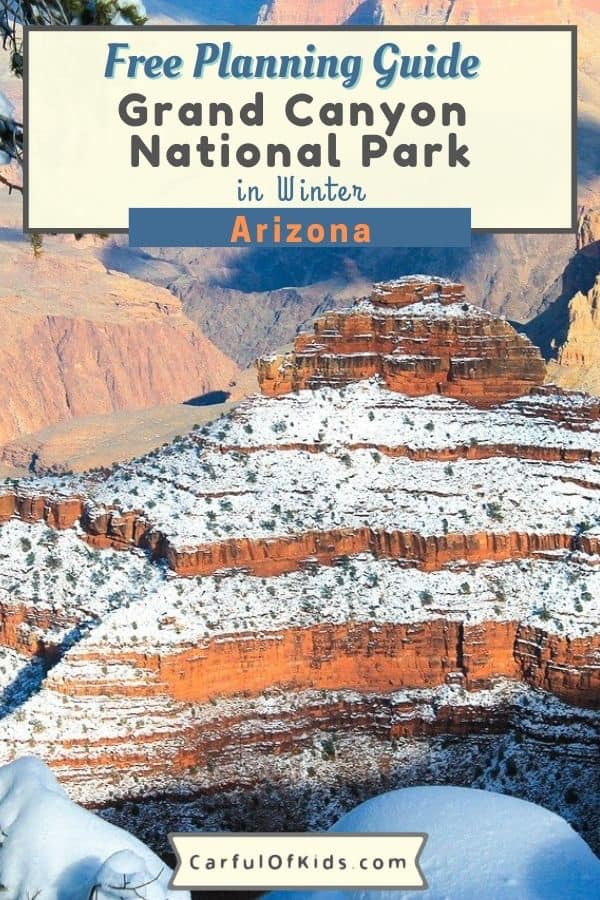

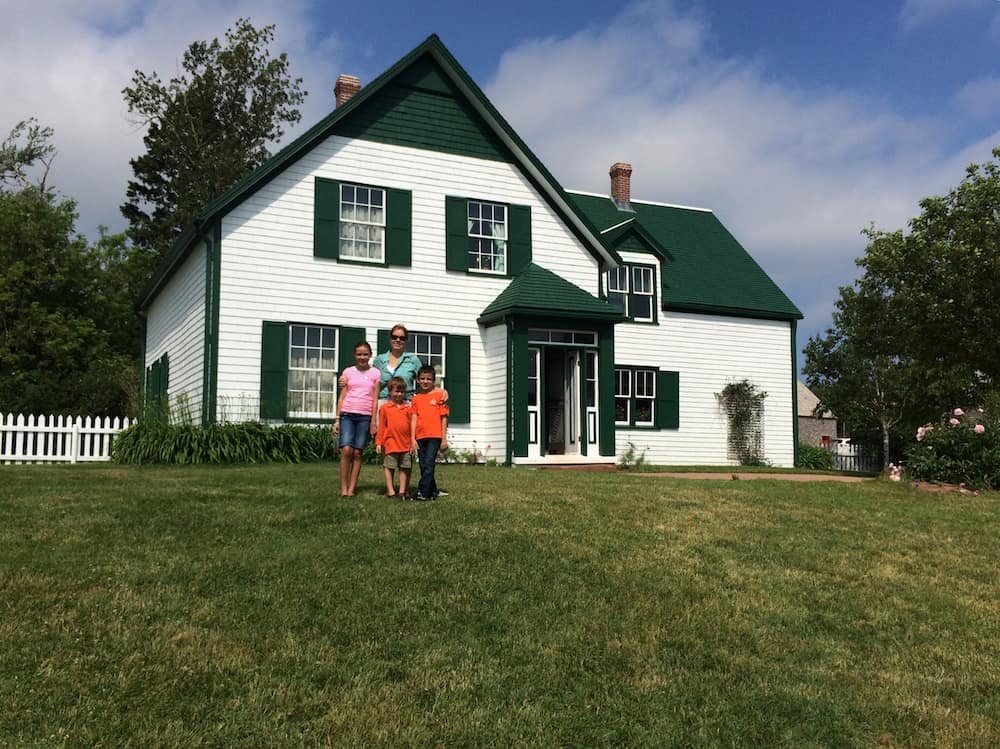
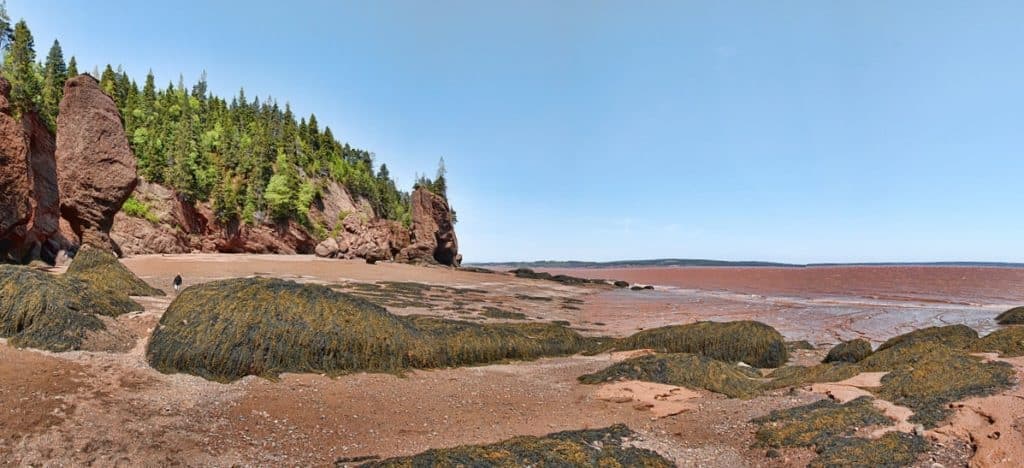
Comments are closed.